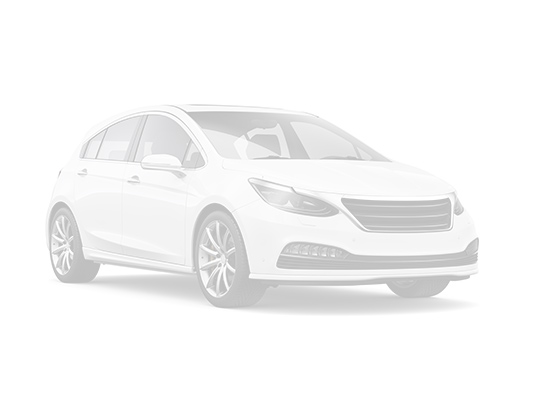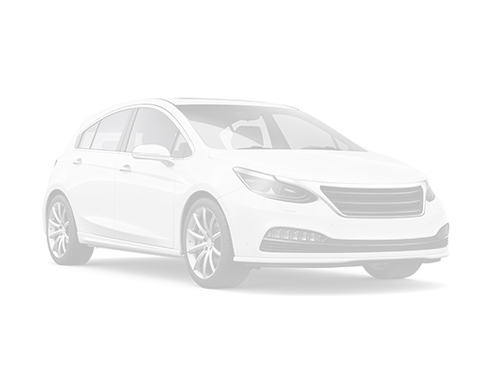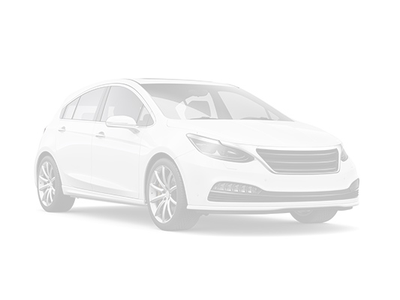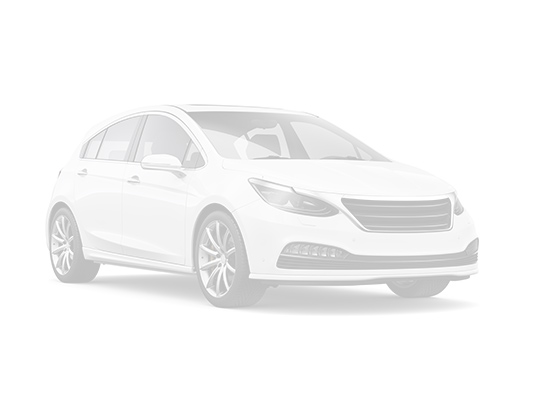2012 Chevrolet Silverado 1500 Work Truck
-
$10,995 Fredy Price
Visit our Store
- Fredericktown Chevrolet
-
109 Bollinger Dr.
Fredericktown, OH 43019
- Sales: 740-848-5999
- Service: 740-848-6999
- Parts: 740-848-5666
- Body Shop: 740-848-5368
Vehicle Information
-
Condition Used
-
 Body Style 2WD Reg Cab 133.0" Work Truck
Body Style 2WD Reg Cab 133.0" Work Truck -
Exterior Color Victory Red
-
Interior Color Dark Titanium, Cloth Seat Trim
-
Mileage 115,727
-
 City/Highway 14/19 MPG
City/Highway 14/19 MPG -
 Engine V6 Cylinder Engine
Engine V6 Cylinder Engine -
 Transmission Automatic / RWD
Transmission Automatic / RWD -
 Fuel Type Gasoline Fuel
Fuel Type Gasoline Fuel
Highlighted Features
- Cruise Control
Dealer Comments
Victory Red 2012 Chevrolet Silverado 1500 Work Truck RWD 4-Speed Automatic with Overdrive Vortec 4.3L V6 MPI
All Features
- Seating capacity: 3
- Front split-bench seat: A split-bench seat allows the driver's portion of the seat to move independently of the passengers.
- Cabback insulator: The inside rear of the cab is trimmed to cover exposed metal.
- Front seatback upholstery: Carpet front seatback upholstery
- Cloth seat upholstery: The seating surfaces are covered in cloth.
- Headliner material: Cloth headliner material
- Manual reclining driver seat: The seatback angle is manually adjustable.
- Driver seat direction: Driver seat with 4-way directional controls
- Passenger seat direction: Front passenger seat with 4-way directional controls
- Front seat armrest storage: The center armrest has concealed storage space within it.
- Front seat center armrest: A single center armrest divides the front seating positions.
- Full floor coverage: The entire passenger compartment floor is covered with flooring material.
- Headliner coverage: Full headliner coverage
- Full floor coverage: The entire passenger compartment floor is covered with flooring material.
- Height adjustable front seat head restraints: The head restraint(s) can be adjusted up or down.
- Lightly tinted windows: The vehicle's glass is lightly tinted.
- Manual air conditioning: The air conditioning requires manual selection of operation mode, temperature and fan speed.
- Manual driver lumbar: Lumbar support is manually adjustable.
- Front head restraint control: Manual front seat head restraint control
- Manual tilt steering wheel: The angle of the steering wheel is adjustable manually.
- Manual reclining passenger seat: The seatback angle is manually adjustable.
- Front split-bench seat: A split-bench seat allows the driver's portion of the seat to move independently of the passengers.
- Gearshifter material: Urethane gear shifter material
- Steering wheel material: Urethane steering wheel
- Manual air conditioning: The air conditioning requires manual selection of operation mode, temperature and fan speed.
- 2 12V power outlets: Multiple 12-volt DC power outlets are provided.
- Ashtray
- Battery charge warning: A message, or specific light illuminates to indicate the vehicle's charging system is not producing acceptable levels.
- Cruise control with steering wheel mounted controls: Cruise control maintains a preset vehicle speed; automatically increasing or decreasing throttle to maintain that speed.
- Day-night rear view mirror: An interior, rear-view mirror that has a manually operated switch that adjusts the mirror slightly, up or down, to reduce glare from traffic at night.
- Door ajar warning
- Passenger door bin: The inner door panel has an integrated storage bin.
- Driver information center: A driver information center is a display screen that provides the driver with vehicle information and/or warnings in graphical and/or textual form.
- Rear windshield: Fixed rear windshield
- Front beverage holder(s): An area is provided to securely hold beverages.
- Front reading lights: Spot lighting is provided for the driver and front passenger that is brighter and more focused than the dome lamp.
- Clock: In-radio display clock
- Locking glove box: A locking glove box provides secured storage space.
- Low fuel warning: A message, or specific light illuminates to indicate the vehicle will run out of fuel soon, and refilling the tank is required.
- Door locks: Manual door locks
- Manual first-row side windows: The first-row of glass on the side of the vehicle can be raised and lowered manually by hand crank.
- Manually folding passenger side door mirror: Manually folding exterior mirrors can pivot on a joint to bring the mirror housing closer to the vehicle body.
- Mini overhead console: A short console, mounted to the headliner of the vehicle, that may contain several useful features such as map lights and storage.
- Oil pressure warning
- Passenger vanity mirror: The visor has a mirror incorporated into its design.
- Service interval indicator: A message, or specific light illuminates to indicate the vehicle needs to be taken in for routine servicing (oil change).
- Tachometer
- Rear cargo door: Tailgate
- Trip odometer: A trip odometer counts the miles or kilometers the vehicle travels and can be reset by the driver.
- Turn signal on warning: A message, or specific light illuminates to indicate the vehicle's turn signal is operating while the vehicle is not turning.
- Variable IP lighting: The intensity of the instrument panel lighting can be adjusted manually.
- Variable intermittent front windshield wipers: The vehicle's front wiper system has low and high speeds, as well as a variable intermittent setting to change the pause length between wipes.
- Steel wheels: Basic steel wheels are stamped from sheet metal and are designed to accommodate full wheel covers.
- Number of doors: 2 doors
- Door handle material: Black door handles
- Door mirror style: Black door mirrors
- Bumper rub strip front: Black front bumper rub strip
- Grille style: Black grille
- Bumper rub strip rear: Black rear bumper rub strip
- Window Trim: Black side window trim
- Windshield trim: Black windshield trim
- Bumpers rear: Chrome rear bumper
- Basecoat/clearcoat paint: A modern multi-layer paint with a layer of very durable clear paint covering the pigment or color layer.
- Spare tire mounted under body with crankdown: The spare tire stores beneath the vehicle in a crankdown carrier.
- Front license plate bracket: A front license plate bracket provides a dedicated means to mount a front plate to the front bumper or fascia of the vehicle.
- Full-size spare tire: A full-size spare tire will match or closely duplicate the specifications of the running tires.
- Fully galvanized steel body panels: Galvanized steel body panels are found on the vehicle's entire exterior.
- Special paint: Monotone paint
- AS tires: All-season tires are designed to provide good all-around traction and handling, and a smooth, quiet ride in all conditions.
- Rear step bumper: A rear bumper with an adequate surface to stand on, that is strong enough to support the weight of a person without causing damage to the bumper. Usually has a protective covering to prevent damage to the finish.
- Regular style pickup box: The side panels of a regular style box are flush with the cab of the truck. The rear wheel wells are contained in the box and are not protruding from the side.
- Door mirror type: Standard style side mirrors
- Trailer sway control: A computer-controlled system used to automatically counteract trailer sway. When the computer senses the vehicle has left the driver's intended path, it will automatically apply select brakes to regain control and restore the intended path of the vehicle and trailer.
- Wheel covers: Wheel hub covers
- LEV II emissions: This vehicle meets Low Emission Vehicle II exhaust emissions regulations.
- Emissions tiers: Tier 2 Bin 5 emissions
- Speakers number: 4 speakers
- Radio: AM/FM
- Antenna: Fixed audio antenna
- Seek scan
- Speakers: Standard grade speakers
- Horsepower: 195 HP @4600 RPM
- Valves per cylinder: 2
- Steering type number of wheels: 2-wheel steering system
- Displacement: 4.3 L
- Alternator: The alternator is an electromagnetic device that converts mechanical energy into electrical energy.
- Automatic locking rear differential: A locking differential forces both wheels on the drive axle to rotate together, at the same rate, regardless which wheel has traction.
- Battery run down protection: Battery run-down protection automatically turns off interior lights and accessory power after a set time period, or when the battery power level reaches a predetermined point, in order to prevent excessive power drain on the battery.
- Four channel ABS brakes: Four channel ABS monitors and operates on each wheel individually.
- Front anti-roll bar: An anti-roll bar, also called anti-sway or stabilizer bar, is a transversely mounted link connecting the right and left sides of the suspension. Body roll or individual wheel movement causes the bar to twist, adding its own spring rate to that of the vehicle's springs to help reduce body roll.
- Front coil springs: A spiral-shaped spring that can be compressed or extended without permanent deformation.
- Front ventilated disc brakes: The front disc brakes incorporate channels, or vents, to promote air circulation. This provides better heat dissipation for cooler operation to maximize braking effectiveness.
- Gas-pressurized front shock absorbers: A shock absorber, also known as a damper, is a cylindrical device that prevents a vehicle's springs from continually bouncing up and down. Energy caused by axle motion is converted into heat, dissipating the energy through hydraulic fluid before it reaches the vehicle body. Pressurized nitrogen gas prevents aeration (formation of air bubbles) of the hydraulic fluid in the shock absorbers, which can occur during hard use and diminish effectiveness.
- Heavy-duty lead acid battery: The battery stores electrical energy to operate vehicle systems.
- Powertrain type: ICE
- Independent front suspension: Independent front suspension allows either wheel to track over road imperfections with minimal effect on the opposite wheel.
- Leaf spring rear suspension: Leaf springs consist of a series of flat bars assembled parallel to the vehicle's sides which resist load inputs by bending.
- Rack-pinion steering: Rack-and-pinion steering is a simple and direct system that uses a gear (pinion) meshing with a toothed bar (rack) to directly actuate the steering linkage.
- Rear leaf springs : A flat, horizontal leaf design resists load inputs by bending.
- Rear wheel drive: Power to drive the vehicle is delivered to the rear wheels.
- Fuel Type: Regular Unleaded
- Regular grade rear springs: Springs are an integral part of a vehicle's suspension system. They control motions and absorb impacts caused by tires passing over uneven road surfaces to reduce the effect on the vehicle body and spreading the weight of a load more widely over the vehicle's chassis.
- Rigid axle rear suspension: A simple non-independent suspension consisting of a rigid transverse member with wheel hubs that are solidly bolted to it. The axle can be attached to the vehicle body by leaf springs or by a combination of suspension arms and links.
- Short & long arm front suspension: This independent front suspension uses unequal length control arms to locate the front wheels. The upper arm is usually shorter than the lower arm to control camber changes during jounce and rebound.
- Spark ignition system: Contemporary ignition systems provide a high level of spark energy to ensure ignition under a wide variety of operating conditions
- Stainless steel exhaust system: Stainless steel construction is used for the exhaust system.
- Regular ride suspension: A regular ride suspension provides riding comfort in typical driving situations.
- Seatbelt pretensioners number: 2 seatbelt pre-tensioners
- 4-wheel ABS brakes: 4-wheel anti-lock brakes use computer-controlled sensors to continuously monitor the rotational speed of each wheel. When impending wheel lockup is detected the computer signals the hydraulic system to pump the brakes more quickly than human reflexes permit.
- 6 airbags: Airbags are designed to cushion the occupants' impact and therefore reduce the possibility of serious injury in the event of a crash.
- Reflector headlamps: Durable composite, or polycarbonate, headlamp units incorporate efficient optics for excellent lighting. Most modern units focus light using multi-reflectors rather than the lens.
- Airbag occupancy sensor: Determines if a seat is being used, either by weight and/or occupancy position sensors within the seat. These factors help to determine which airbags should and should not inflate, and the intensity with which they should deploy, in the event of a collision.
- Analog instrumentation display: The majority of the instrument cluster gauges are a traditional analog style or are a digital representation of analog gauges and their movement.
- Auto on/off headlamp control: A sensor controls the vehicle lamps, turning on or off all the lights, including the headlights at full power, depending on ambient light conditions.
- Curtain first row overhead airbags: Airbags are designed to cushion the occupants' impact and therefore reduce the possibility of serious injury in the event of a crash.
- Daytime running lights: Daytime running lights provide headlamp illumination as soon as the vehicle is started.
- Delay-off headlamps: When the vehicle is turned off the headlamps automatically turn off after a preset time delay.
- Driver front impact airbag: Airbags are designed to cushion the occupants' impact and therefore reduce the possibility of serious injury in the event of a crash.
- Fade dome light: A fade dome light remains on for several seconds after the door(s) have been shut, then slowly begins to dim until it has shut itself off.
- Front disc / rear drum brakes: The brake system uses front disc and rear drum brakes. Each front wheel has a disc that rotates at wheel speed, straddled by a caliper that squeezes the disc (rotor) with friction pads to provide braking. Each rear wheel has a brake drum that rotates with the wheel. When the brakes are applied, a brake shoe is forced into contact with the brake drum to slow wheel rotation.
- Height adjustable front seatbelts: The upper anchor point of the outboard front seats can be raised or lowered manually.
- Front seatbelt pretensioners: Pyrotechnic retractors quickly remove slack from the safety belts in a crash exceeding a preset level of severity.
- Halogen beam headlamps: Halogen headlamps are standard on most vehicles. They produce a bright white light.
- Center high mounted stop light: The auxiliary brake light (CHMSL) is located in a center position at the rear of the vehicle, higher than traditional brake lamps.
- Hill hold control: When starting from an incline position, the vehicle automatically applies brake force to prevent itself from rolling back.
- Multiple enclosed headlamps: The headlamp system contains separate bulbs for the high and low beams. Both are located in the same housing behind a shatter-resistant transparent cover.
- Ignition immobilizer: Ignition immobilizer is a passive means of security. It consists of a transmitter embedded within the ignition key and a sensor located in the vehicle. These two circuits must be present, and must recognize each other before the vehicle will start.
- Passenger front impact airbag: Airbags are designed to cushion the occupants impact and therefore reduce the possibility of serious injury in the event of a crash.
- Pickup box cargo light: A cargo box light shines down into the pickup box to assist night time loading and unloading.
- Seat mounted driver side impact airbag: Airbags are designed to cushion the occupants' impact and therefore reduce the possibility of serious injury in the event of a crash.
- Seat mounted passenger side impact airbag: Airbags are designed to cushion the occupants' impact and therefore reduce the possibility of serious injury in the event of a crash.
- Low tire air pressure warning (tire specific): A message, or specific light illuminates to indicate exactly which tire is under inflated or will display the exact pressure in each tire. Some systems also monitor the spare tire.
- DriveType: RWD
- City: 14 MPG
- Hwy: 19 MPG
- Combined: 16 MPG
- Fuel System: Electronic Fuel Injection
- Fuel Tank Capacity: 34 gal
- Fuel Type: Gasoline Fuel
- Horse Power: 195
- Trailering Capacity: 0
MPG estimates on this website are EPA estimates; your actual mileage may vary. For used vehicles, MPG estimates are EPA estimates for the vehicle when it was new. The EPA periodically modifies its MPG calculation methodology; all MPG estimates are based on the methodology in effect when the vehicles were new (please see the ?Fuel Economy? portion of the EPA?s website for details, including a MPG recalculation tool).
MPG estimates on this website are EPA estimates; your actual mileage may vary. For used vehicles, MPG estimates are EPA estimates for the vehicle when it was new. The EPA periodically modifies its MPG calculation methodology; all MPG estimates are based on the methodology in effect when the vehicles were new (please see the ?Fuel Economy? portion of the EPA?s website for details, including a MPG recalculation tool).








